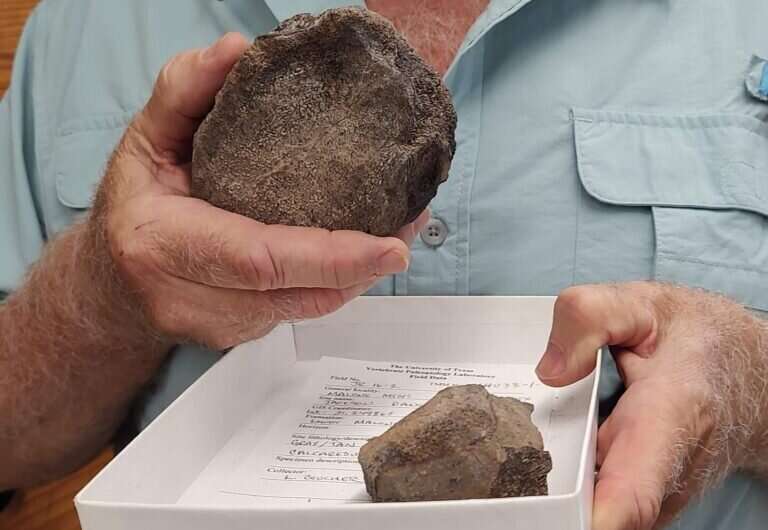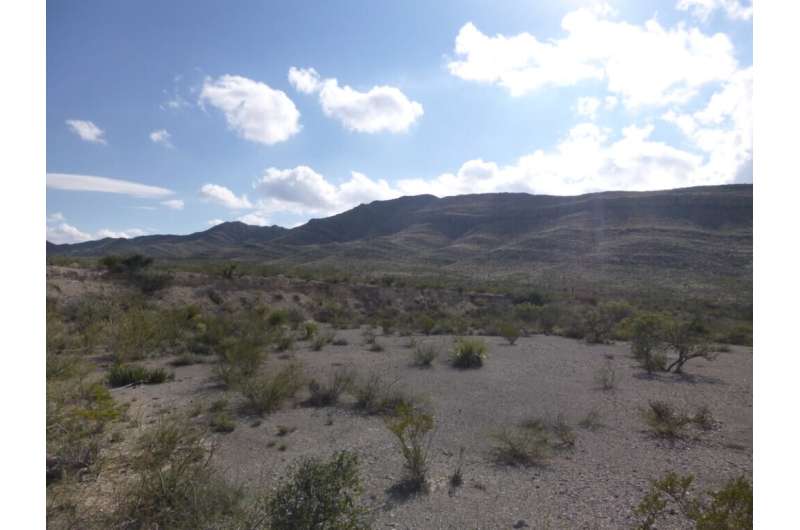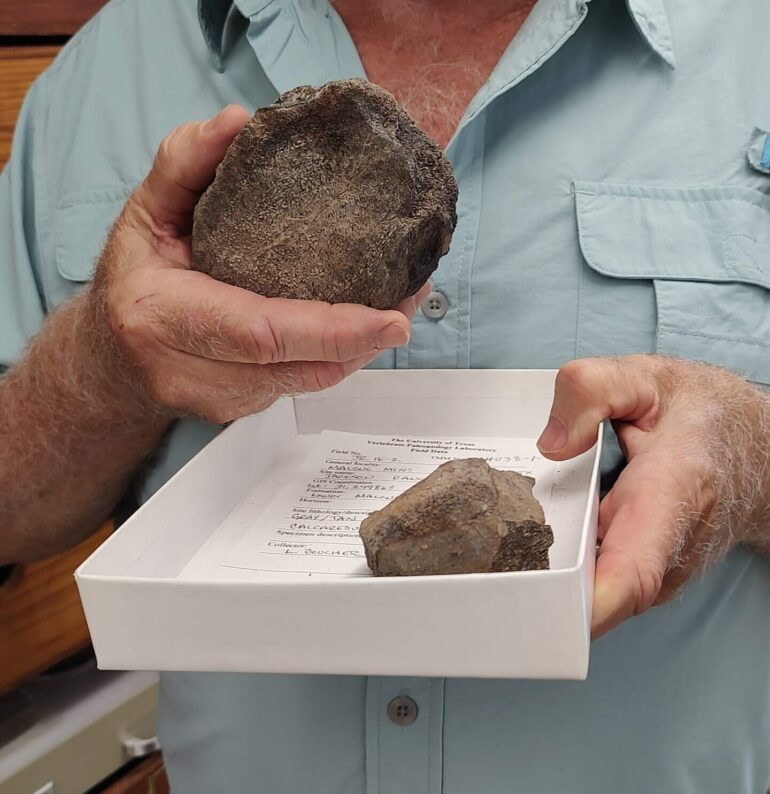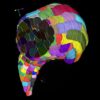A team led by scientists at The University of Texas at Austin has filled a major gap in the state’s fossil record—describing the first known Jurassic vertebrate fossils in Texas.
The weathered bone fragments are from the limbs and backbone of a plesiosaur, an extinct marine reptile that would have swum the shallow sea that covered what is now northeastern Mexico and far western Texas about 150 million years ago.
The bones were discovered in the Malone Mountains of West Texas during two fossil hunting missions led by Steve May, a research associate at UT Austin’s Jackson School of Geosciences Museum of Earth History.
Before the discovery, the only fossils from the Jurassic that had been collected and described from outcrops in Texas were from marine invertebrates, such as ammonites and snails. May said that the new fossil finds serve as solid proof that Jurassic bones are here.
“Folks, there are Jurassic vertebrates out there,” May said. “We found some of them, but there’s more to be discovered that can tell us the story of what this part of Texas was like during the Jurassic.”
A paper describing the bones and other fossils was published in Rocky Mountain Geology on June 23.

Steve May, a research associate at the Jackson School of Geosciences, holds a fossil from a plesiosaur, an extinct marine reptile. © Jackson School of Geosciences/The University of Texas at Austin.
The Jurassic was an iconic prehistoric era when giant dinosaurs walked the Earth. The only reason we humans know about them, and other Jurassic life, is because of fossils they left behind.
But to find Jurassic-aged fossils, you need Jurassic-aged rocks. Because of the geological history of Texas, the state hardly has any outcrops from this time in Earth history. The 13 square miles of Jurassic-aged rocks in the Malone Mountains make up most of those rocks in the state.
In 2015, while researching a book, May learned that there were no Jurassic bones in the Texas fossil record, and he decided to go to the Malone Mountains to explore.
“You just don’t want to believe that there are no Jurassic bones in Texas,” May said. “Plus, there was a tantalizing clue.”

The Malone Mountains of West Texas. Texas has very few outcrops of Jurassic rocks. Most of them are in the Malones. © Joshua Lively
The clue was a mention of large bone fragments in a 1938 paper on the geology of the Malone Mountains by Claude Albritton, who later became a geology professor at Southern Methodist University (SMU). It was enough of a lead to get May and his collaborators out to West Texas to see for themselves. Large bone fragments were what they found. The plesiosaur fossils are eroded and broken up. But it’s a start that could lead to more science, said co-author Louis Jacobs, a professor emeritus at SMU.
“Geologists are going to go out there looking for more bones,” Jacobs said. “They’re going to find them, and they’re going to look for the other things that interest them in their own special ways.”
Today, the Malone Mountains rise above the dry desert landscape. During the Jurassic, the sediments were deposited just below sea level probably within miles of the shoreline.
More information:
Steven R. May et al, A record of Late Jurassic vertebrates from Texas, Rocky Mountain Geology (2023). DOI: 10.24872/rmgjournal.58.1.19
Provided by
University of Texas at Austin
Citation:
Scientists describe first known Jurassic vertebrate fossils found in Texas (2023, June 27)



